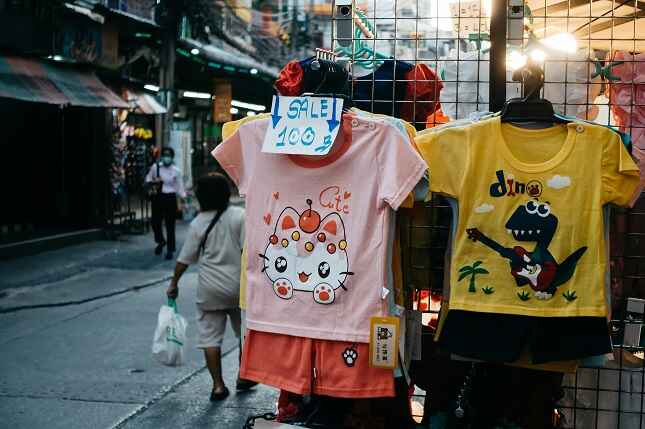Setting Up Your Etsy Store for Print on Demand Success
Building a successful print on demand business on Etsy starts with a sturdy foundation. To begin, navigate your preferred web browser to Etsy.com and click “Sell on Etsy” to get started on setting up your seller account. Be sure to enter your accurate business information for an appropriate online presence and a memorable shop name that aligns with your business’ brand identity. In addition, set up your payment preferences with Etsy’s appli
cable online payment processor, Etsy Payments, and connect a verified bank account to receive funds from sales and revenues. Next, prior to listing any products, set your shop’s visual identity, including a logo, banner, and profile picture that present and represent your artistic style and personality. Furthermore, create detailed shop policies for potential customers to review prior to purchase for your production times, expectations of shipping, and return policy relating specifically to print on demand. Furthermore, a compelling “About” section can be included to inform potential customers of your story as an artist and of your design process. Lastly, legally, acquire all proper legal licenses and relatable tax documents and certifications specific to your location and begin to collect sales tax upon first sale. Lastly, keep all your sales and business information organized through detailed records and separate business accounts for accurate tax report filing. Furthermore, familiarize yourself with intellectual property rights to find adequate truths and disparities between your designs and others’ existing protections and copyrights and be sure to protect your artwork and designs as copyright through proper documents and terms of use agreements.
Choosing the Right Etsy Print on Demand Partners
To ensure the long-term prosperity of your store, you must carefully consider a wide range of factors and weigh their respective importance in choosing the perfect print on demand partner. In your assessment of competing providers, prioritize product quality and ensure their designs withstand high levels of wear and tear over the years. Before deciding on a partner, order samples from potential providers to determine factors such as print quality, print clarity, and color accuracy. Similarly, look into the certification of their production facilities and their quality control procedures for work. Transportation time and dependability should not be overlooked, as these factors have a significant impact on your shop’s credibility if they are off for too long. Integration is another major consideration when it comes to partnering with print on demand companies. Integration should be seamless, and the supplier should offer direct integration with Etsy or connection through an API to streamline order processing. Finally, both emerging suppliers like InkedJoy and established giants like Printful and Printify offer excellent integration options and a wide range of products that should meet your art’s requirements. Finally, think about how your art can be delivered by a company that specializes in your industry. Based on Printed Mint and Art of Where, these factories specialize in the two most popular forms of our shop’s items: great art tattoos and full-wall art prints. Finally, effects such as eco-friendly options or unique printing options that help you realize your vision can enhance your offerings. Finally, consider the provider’s customer service and capacity to operate during peak times. Some restrictions include production pricing and minimum quantities.
Integrating Print on Demand into Your Etsy Workflow

Product Listing Best Practices
To generate persuasive product listings, it is necessary to ensure that the text is optimized for Etsy’s search algorithm. Formulate descriptive titles that use search-friendly words such as “custom products,” “personalized gifts,” and personalized product names. Also, add words that describe the uniqueness of the product by writing down the result of the customization process. When writing a product description, include a description of the materials that have a connection to yours while specifying the size and process associated with production. Be sure to mention the handmade quality of the products.
Automation Tools for Efficiency
Make your processes more efficient by installing automated solutions for inventory and order management. Most POD platforms offer the functionality of direct integration that enables automatic stock level synchronization and order status updating. For example, integration of Printful with Etsy allowed my shop to process orders within seconds after the payment, and customers get tracking numbers immediately after the label is printed. The multi-platform dashboard of Printify helped to facilitate easy multi-listing management of the same product variants by integrating them within a single dashboard, and now I can process from 5 to 10 orders and fulfill them in a couple of minutes. Choose an order management software solution that would integrate and preserve all the information in one place, or merge notifications and communication with customers on your product pages – this would eliminate manual intervention in your operations and the mistakes related.
Navigating Etsy’s Dropshipping and POD Policies
Understand the distinction between prohibited dropshipping and permitted print on demand. Although Etsy prohibits the former – the reselling of mass-produced goods, print on demand, where artists create unique designs for items that are only printed after a customer order, is allowed under a POD partnership. That said, be sure to note in your shop policies and product listings from which POD partner your designs are being manufactured by professional printing partners with your designs. Make certain your items maintain creative control in order to protect your shop from suspension. Keep documents on your design process and original artwork files, which you can use to verify if your items are culprits of intellectual property theft. While taking photos of items, make sure that the final printed goods match your photos, and never use misleading mockups. Respect all delivery timeframes and note that your delivery from POD manufacturer to the consumer will be similarly affected. Etsy’s policies are ever-evolving. Therefore, stay updated by staying in the seller handbook and Etsy’s community forums. Keep your listings up to date and keep an eye on changes. Although you can transfer items created using POD fulfillment, things brought from other businesses or established shops do not match Etsy’s criteria.
Marketing Your Etsy Store with Custom Products
To effectively market your print on demand products, you must adopt a comprehensive strategy anchored on visibility and brand transparency. Title, tag, and describe your Etsy listings that contain high-ranking keywords which flow naturally within usage across both. These words should be terms used by potential customers, not mere brand slogans such as “personalized gifts,” “custom artwork,” and other product-specific phrases. Simultaneously, do respect the unique tone of your voice. Enhance your presence on social media and put your designs in action, create some behind-the-scenes content, from the first sketch to subsequent product trials, and show your professional tools that you use. Lifestyle photos are gaining popularity on Instagram and Pinterest. Use them to show short stories or share your designs behind applicable hashtags. Building relationships with micro-influencers is a viable method of reaching a new audience base that shares similar taste and artistic style. Create photorealistic product mockups with professional tools that accurately represent the eventual printing from your print provider. Invest in professional images for just a few of your products to maintain transparency with prospective buyers. Share the experiences of past clients in user-generated content via photos of your products in everyday use. Develop a unique email marketing strategy to maintain your current customer database. Create a New Arrivals section or provide them with exclusive products to expand your consumer base. Don’t forget that branding must be consistent across all your platforms and products—in order to become recognizable in the products industry.
Maximizing Your Success with Print on Demand
In conclusion, print on demand partnership is an undoubtedly unique chance that artists have to actualize their creative vision into a successful Etsy business. When an artist does not have to worry about running and funding an inventory or about extensively detailed logistics, they have time to invest in their primary craft – designing products that customers like and find appealing. However, the key to success is finding reliable print partners, observing Etsy’s guidelines, and creating efficient workflows that grow with your business. It is critical to remain balanced: start small with a choice design collection, test products and market viability, and then invest in the production of more products that meet the customers’ demand. Additionally, be transparent about your production and align with Etsy’s original aim of supporting genuine, handmade goods. If you focus on quality, pay attention to the plan, and understand the platform’s rules, this will turn into a money-making, sustainable means of expressing your artistic vision.









































